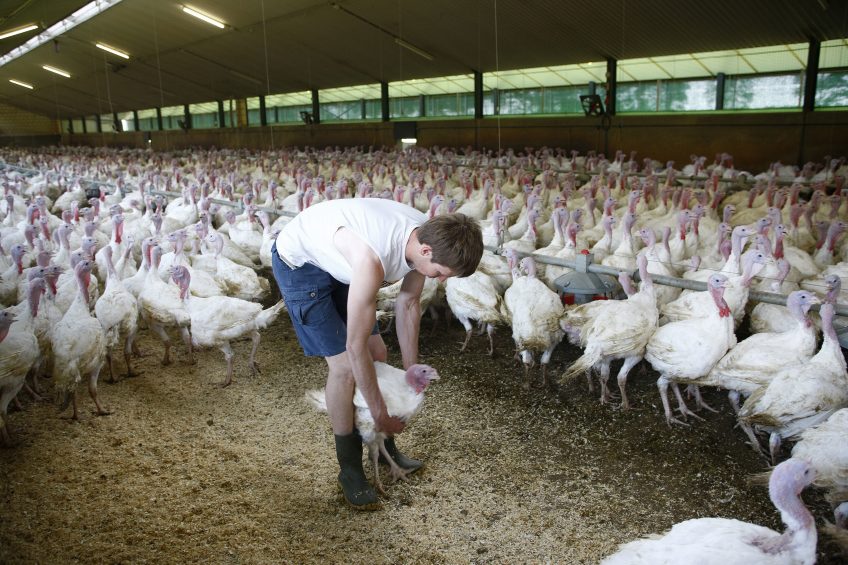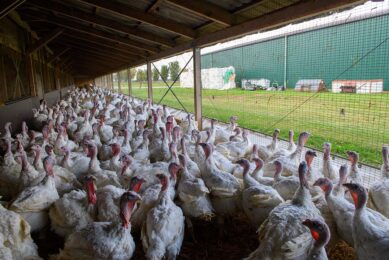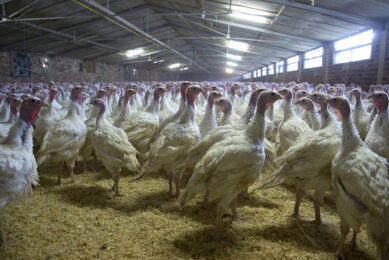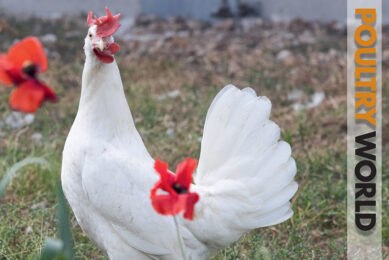Reducing antibiotics in turkey production

Turkeys are lagging behind other farm livestock, notably broilers, in the elimination of antibiotics from routine husbandry. An integrated approach, centred on nutrition, is essential. The ‘business as usual’ approach will not work.
Antibiotic resistance is one of the most pressing public health issues, and the turkey sector must play its part in reducing drug use where possible, according to a poultry nutrition specialist at the latest International Turkey Science and Production Conference in the UK.
About 80% of antibiotics used go into livestock production
“Reducing or eliminating antibiotics from turkey production means no ‘business as usual’ approach… with very little room for error,” warned Ellen Hambrecht from Trouw Nutrition. “Antibiotic resistance is one of the most pressing public health issues globally,” explained Dr Hambrecht. “Although there is common agreement that the most important source of antibiotic resistance in human healthcare is human healthcare itself, use of antibiotics in livestock production is increasingly in the spotlight.” She continued: “This may be because a large part of the antibiotics that we use go into livestock production, an estimated 80% of total use, and also the emotional issue that society does not accept deaths due to antibiotic resistance that had its origin in animal production.”
Extended spectrum beta lactams
One important class of resistance came from extended spectrum beta lactams (ESBLs). This was a group of enzymes produced by bacteria such as E. Coli and Klebsiella, which had the potential to break down beta lactamase and hence inactivate key antibiotics such as penicillin and cephalosporins. “Patients infected with such bacteria face limited treatment options and higher mortality, simply because it takes longer before an effective treatment has been found.”
Antibiotic use in turkeys higher than in broilers
Initially poultry were considered to be an important transmission route to humans. Newer research indicated that this is an oversimplification, and implicated companion animals, wild life and the environment. Data from a German survey in 2014 revealed a high incidence of antibiotic treatment in turkeys; an average of 526 flocks of which 93% received antibiotics on an average of more than 20 days. More data from the Netherlands up to 2015 showed great reduction in antibiotic use over several years, but still showed that the use in turkeys was a lot higher than in other species such as broilers.
Consumer perception of the industry and antibiotic use
“There’s still a lot of work to be done,” concludes Dr Hambrecht. “I shared that data with a friend of mine, a doctor in the intensive care unit of a large Swiss hospital, who said: ‘Have you any idea to what lengths we go to keep Colistin (a particular antibiotic) on the shelf. When nothing works it’s our last resort, and you maniacs are throwing it in the drinking water’.”
“So that’s a reality check. We want to feed the animals, we want to keep them healthy, but that is how we are perceived by the outside world.” “Dutch databases confirmed that in broilers, we were better equipped to almost eliminate the use of these third choice antibiotics, which includes the cephalosporins and fluoroquinolones,” said Dr Hambrecht, “whereas in turkeys we have achieved a reduction, but still our use is too high and that’s where a major challenge lies.”
No silver bullet solution
“Reducing or even eliminating the use of antibiotics in turkey production would not be easy,” she said. “There is no silver bullet. Instead, an integrated approach that encompasses feed, farm and health management strategies is essential.”
Up to 70% of antibiotic treatments in turkeys were related to gut health problems, said Dr Hambrecht. Another 23% were respiratory problems, which may be caused by bad air quality, which can be linked in turn to wet litter and digestive problems. Therefore, an integrated approach was essential, centred on; nutrition, on farm management with daily monitoring for a range of indicators, health management to reduce infection pressure including biosecurity and water sanitation, and all with the aim of optimising gut health.
Join 31,000+ subscribers
Subscribe to our newsletter to stay updated about all the need-to-know content in the poultry sector, three times a week. Beheer
Beheer








 WP Admin
WP Admin  Bewerk bericht
Bewerk bericht